Author: Jake Huolihan
A defining characteristic of Belgian beers are the phenols and esters developed by the particular yeasts used to ferment them. With a wide range of characteristics including fruit, clove, pepper and some higher alcohols, the compounds produced by these strains give the beers from Belgium the aromas and flavor loved by drinkers the world over.
Brewers have long sought to control the expression of certain compounds by way of some form of yeast manipulation on the belief that altering a specific input or process can result in vastly different outcomes. One such method has to do with the temperature at which the beer is fermented, with cooler environments purportedly favoring spicy phenols while warmer climates encourage more fruity ester development.
My consumption of Belgian beer is infrequent, but I was inspired to make one to enjoy during for the hot Colorado summer after drinking a truly great Trappist Single. With so many past xBmts suggesting fermentation temperature when using notably clean yeasts doesn’t seem to have the expected impact, I decided to test it out with a more expressive Belgian strain.
| PURPOSE |
To evaluate the differences between beers fermented with a single pack of Imperial Yeast B48 Triple Double at either 65°F/18°C or 77°F/25°C.
| METHODS |
I designed a simple recipe for this xBmt in order to allow any differences to stand out.
Frequency
Recipe Details
| Batch Size | Boil Time | IBU | SRM | Est. OG | Est. FG | ABV |
|---|---|---|---|---|---|---|
| 5.5 gal | 60 min | 35.1 IBUs | 4.2 SRM | 1.053 | 1.009 | 5.9 % |
| Actuals | 1.053 | 1.007 | 6.1 % | |||
Fermentables
| Name | Amount | % |
|---|---|---|
| Genie Pale Malt (Root Shoot) | 5.5 lbs | 47.83 |
| Odyssey Pilsner Malt (Root Shoot) | 5.5 lbs | 47.83 |
| Cane (Beet) Sugar | 8 oz | 4.35 |
Hops
| Name | Amount | Time | Use | Form | Alpha % |
|---|---|---|---|---|---|
| Perle | 20 g | 60 min | Boil | Pellet | 8 |
| Perle | 20 g | 30 min | Boil | Pellet | 8 |
| Perle | 10 g | 5 min | Boil | Pellet | 8 |
Yeast
| Name | Lab | Attenuation | Temperature |
|---|---|---|---|
| Triple Double (B48) | Imperial Yeast | 76% | 65°F - 77°F |
Notes
| Water Profile: Ca 68 | Mg 0 | Na 8 | SO4 75 | Cl 68 |
Download
| Download this recipe's BeerXML file |
I collected my RO water and adjusted it to my desired profile the night before brewing.
When I woke up the next morning, I turned on the elements to heat my strike water before proceeding to mill the grains.
I then weighed out the sugar addition and kettle hops.
With the water appropriately heated, I transferred it to my MLT and let it sit for a period of pre-heating before mashing in to hit my target mash temperature.
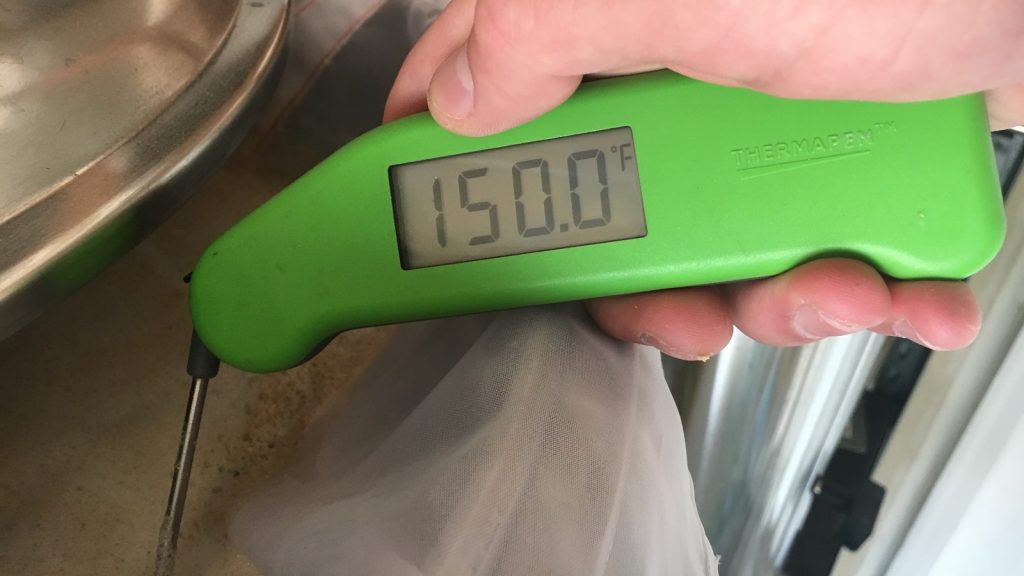
About 15 minutes into the mash, I stole a small sample of wort for pH measurement.

When the 60 minute mash rest was complete, I lautered directly into my kettle.
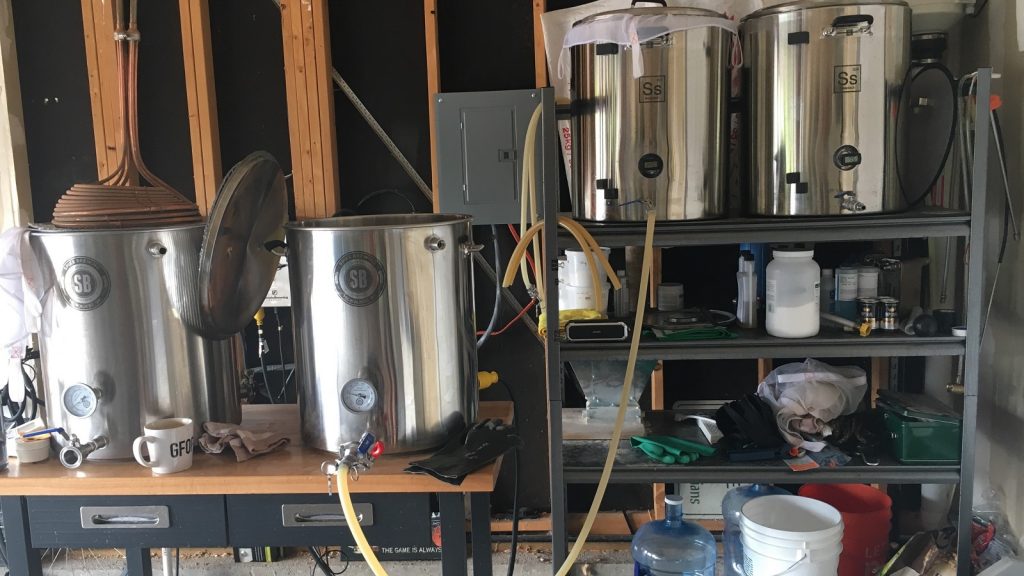
The wort was then boiled for 60 minutes with hops added per the recipe.
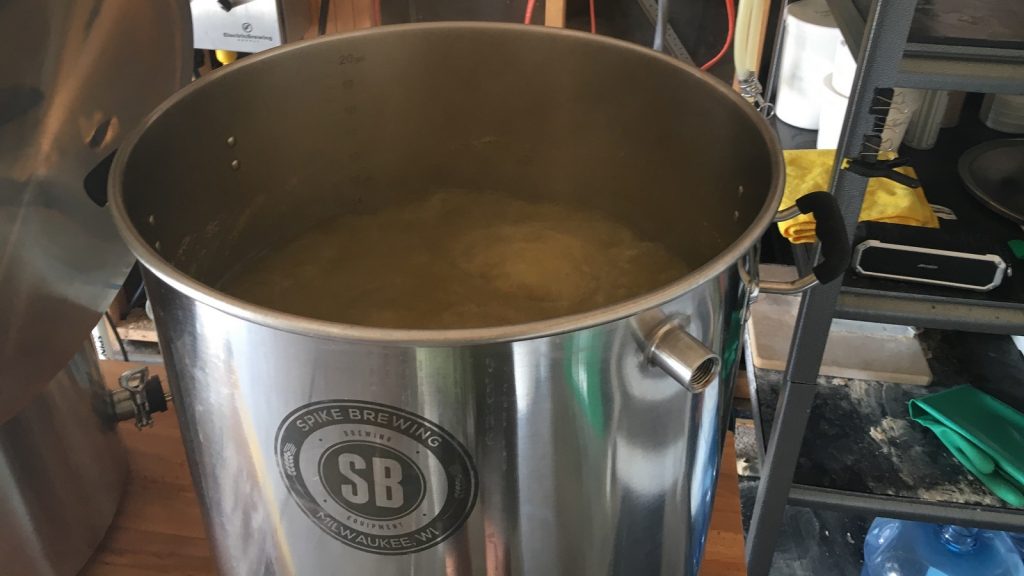
At the completion of the boil, I quickly chilled the wort 80°F/27°C with my IC.

A refractometer reading showed the wort was sitting right at my target OG.

I let the wort sit for 10 minutes before transferring identical volumes to separate Brew Buckets.
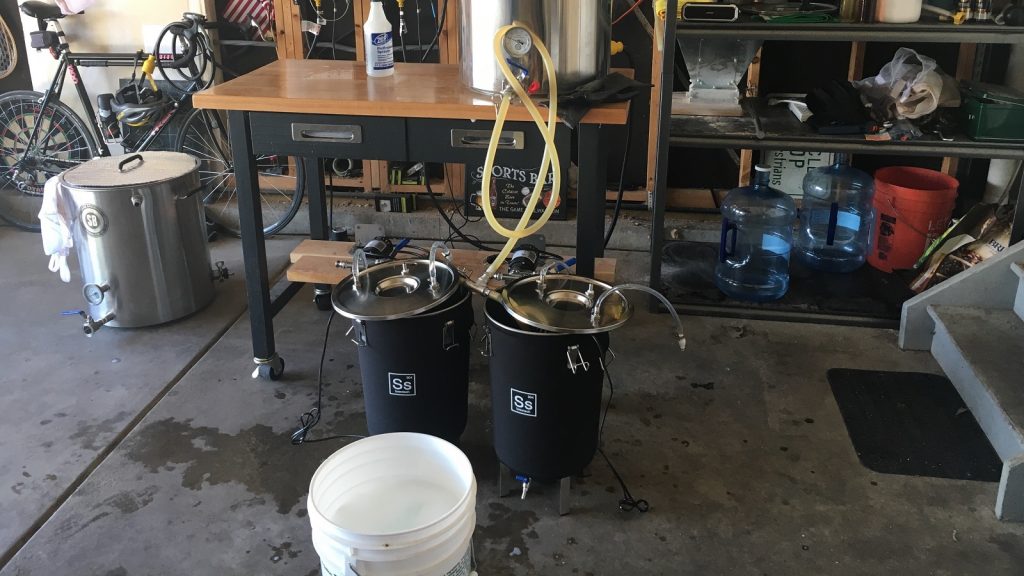
I moved the filled fermentors to my fermentation area and attached each to my glycol chiller, one set to 65°F/18°C and the other set to 77°F/25°C. Thanks to the chilling powers of glycol, both worts were ready to pitch within 10 minutes, at which point each one received its own pouch of Imperial Yeast B48 Triple Double.
After 3 days of vigorous fermentation, I pulled samples for hydrometer measurements and found the cool ferment beer was at 1.012 SG while the warm ferment beer had already reached expected FG of 1.006. After an additional 5 days, 8 in total, signs of activity were absent so I took another set of hydrometer measurements indicating a slight difference in FG.
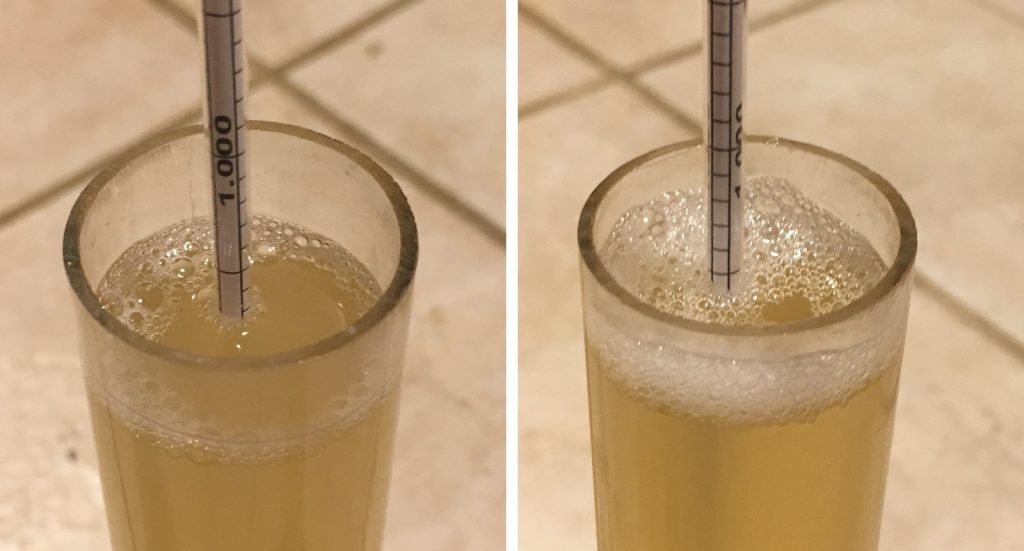
I then kegged the warm the beers.

The filled kegs were placed in my keezer where they were left to carbonate and cold condition for 3 weeks before being served to blind participants.
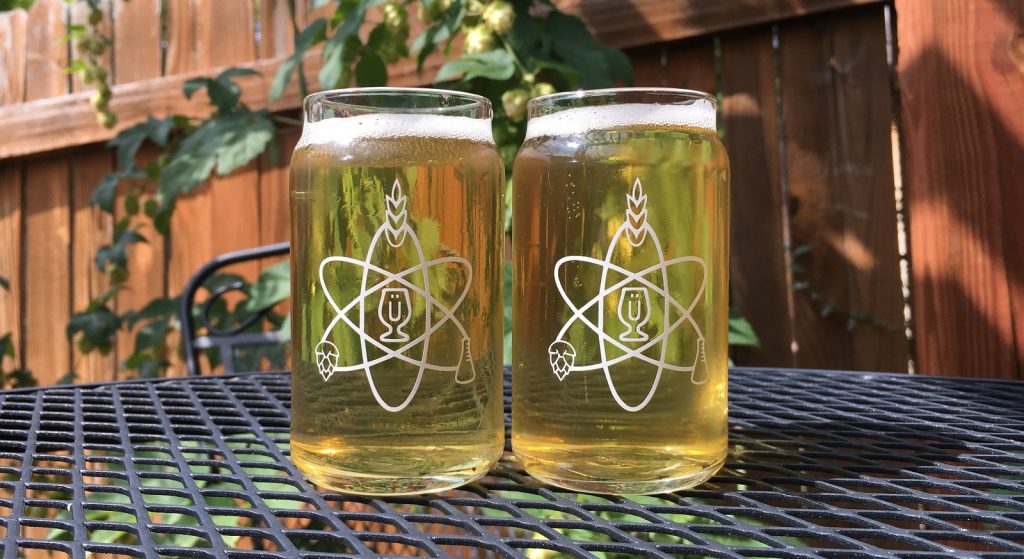
| RESULTS |
A total of 21 people of varying levels of experience participated in this xBmt. Each participant was served 1 sample of the cool ferment beer and 2 samples of the warm ferment beer in different colored opaque cups then asked to identify the unique sample. At this sample size, 12 tasters (p<0.05) would have had to identify the unique sample in order to reach statistical significance, though only 7 (p=0.58) made the accurate selection, indicating participants in this xBmt were unable to reliably distinguish a Belgian Ale fermented at 65°F/18°C from one fermented at 77°F/25°C.
My Impressions: After 3 failed triangle test attempts, all of which were complete guesses, I stopped trying and accepted the beers were essentially identical. I simply couldn’t tell them apart based on aroma, flavor, and mouthfeel. And this was fine with me because I really enjoyed the beers immensely, a delicious warm weather quaffer that, to me, had a delicate balance of spicy phenols and light citrus on top of a doughy cracker-like malt character. I thought this beer was so good that I’m reconsidering my stance that pale lagers are the ultimate summer beer. I absolutely plan to brew this one again!
| DISCUSSION |
After good sanitation, precisely controlling fermentation temperature is viewed by many as being the most important factor to crafting delicious beer. Moreover, when it comes to making Belgian ales, a belief held by many is that even small differences in fermentation temperature will have a noticeable impact, with cooler and warmer environments encouraging the expression of different characteristics. In curious contrast to this claim are the results from this xBmt showing tasters were unable to reliably tell apart beers fermented with a Belgian yeast at either 65°F/18°C or 77°F/25°C.
While the 12°F/7°C discrepancy in fermentation temperature may not have had a perceptible impact, there were some objectively observable differences, namely that the warm ferment beer finished fermenting quicker and 0.001 SG point lower than the cool ferment beer. Since the finished beers were, for all intents and purposes, the same, it’s possible those looking to expedite their grain-to-glass time can use warmer fermentation environments to do so without ruining their beer. At least when brewing Belgian ale with Imperial Yeast B48 Triple Double.
With so many fermentation temperature xBmts unexpectedly returning non-significant results, I’m resigned to loosen my grip a bit on the oft touted importance of precise fermentation temperature control. Given my inability to detect any differences whatsoever between the cool and warm ferment beers, along with my characteristic impatience and overall enjoyment of the beers, I’m encouraged to ferment more beers at warmer temperatures. At the same time, I have no plans to ditch my current fermentation temperature control setup, as I feel it lends a satisfying degree of control and predictability to my brewing.
If you have any thoughts about this xBmt, please do not hesitate to share in the comments section below!
Support Brülosophy In Style!
All designs are available in various colors and sizes on Amazon!
Follow Brülosophy on:
FACEBOOK | TWITTER | INSTAGRAM
If you enjoy this stuff and feel compelled to support Brulosophy.com, please check out the Support page for details on how you can very easily do so. Thanks!



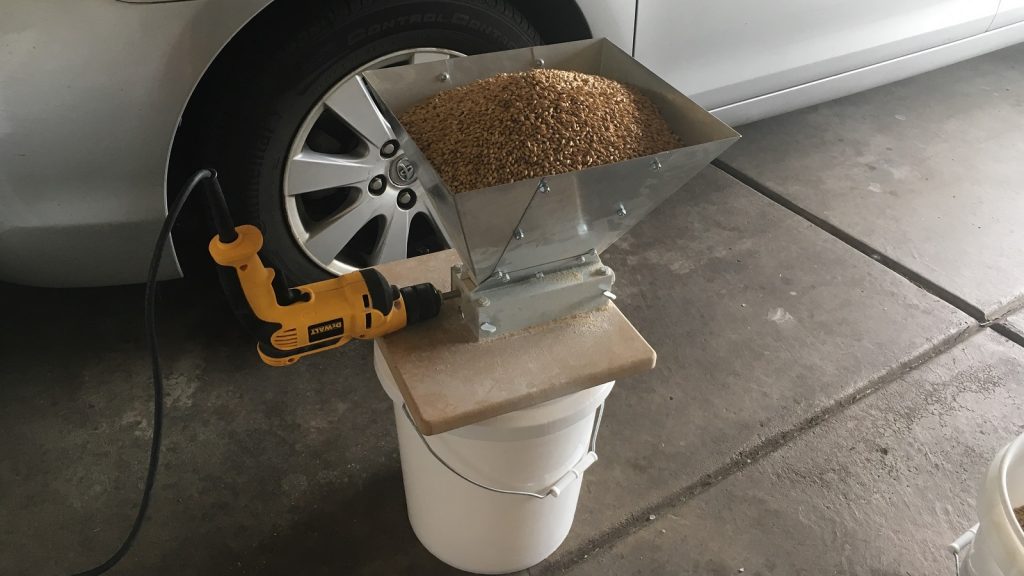
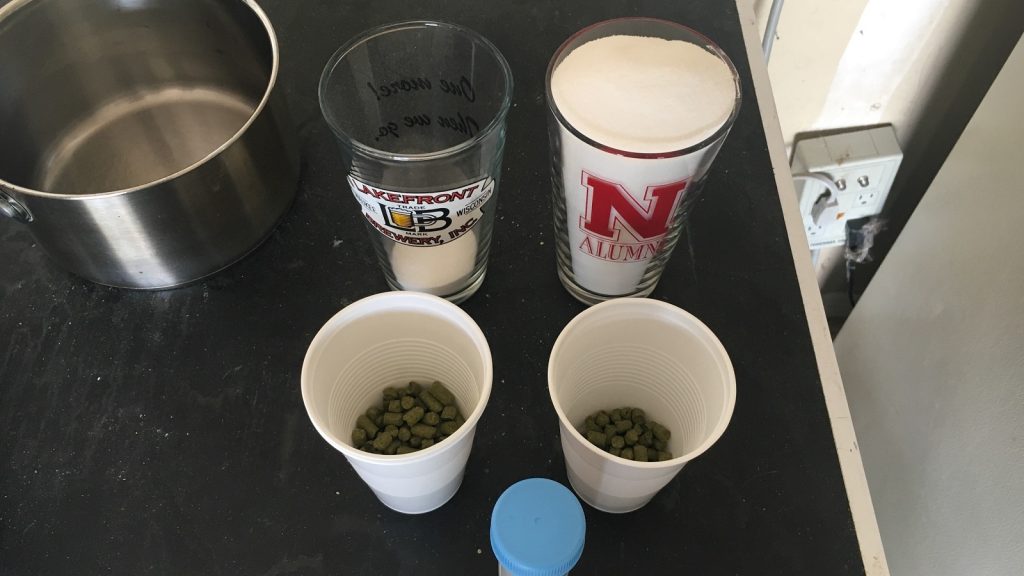











19 thoughts on “exBEERiment | Fermentation Temperature: Imperial Yeast B48 Triple Double In A Trappist Single”
Geez! One more brewing practice shot down, It seems like nothing matters when it comes to brewing beer.
“Triple Double produces moderate esters with low to no phenolic characteristics”
That’s not what I would have predicted at all! Interesting. Would love to see this done with 1056 or US-05.
Interesting result. I still ferment on the cool side though as I’m paranoid (maybe needlessly) about fusel alcohols as much as flavour. I tend to get much worse hangovers/headaches from warm-fermented drinks like red wine and Belgian beer than cool fermented drinks such as lager and white wine, and I suspect fusels or other congeners might be to blame.
Anecdotally, I have found that temperature stability during the fermentation seems to have more impact to the flavor characteristics of a beer than the absolute temperature of fermentation. Whenever I get lazy and ferment at ambient basement temps rather than using my temperature controlled fermentation chamber, I always get more variability and esters in the beer. When I’ve fermented similar beers temperature controlled – they are very similar whether done at the bottom or top of the yeast’s temperature range. For the past few years, I’ve felt that it’s the swings in temperature that cause more impact to fermentation character.
Totally agree…. would love to see an experiment comparing a beer fermented at a steady 68 degrees vs one that averaged 68….. maybe bouncing between 62 and 74 every four hours or so.
+1
What yeast strain is the “Imperial Yeast B48 Triple Double”? Westmalle I believe?
I’ve done split batches across almost all of the ‘belgian double/tripple/abbey/trappist’ strains, and they have quite different characteristics — be aware that this experiment should only be attributed to this specific strain.
Fortunately, Westmalle has generally been the overall favorite of the bunch, so, it’s a great one to use.
Yeah Lakefront Brewery. One more and then we go. Good information, as always. My temp chamber is tied up with a MACC IPA that I’m brewing for the first time so I took a gamble on fermenting an ale with US-05 in the basement. Weather has been a little warmer than expected which is keeping my basement temps above 70deg but curious to see the end result of that non-temp controlled ale. Experiments like this definitely gave me piece of mind to try that second ale out even though the conditions aren’t as perfect as I’d want them. The beer may not be great and it may not suck but there’s a lot of room for enjoyment in between.
Thanks Jake. Just made my first Trappist Single this weekend with Triple Double and very similar recipe (other than Hallertau). Started at 62, free rise to about 77-78 and hanging out around 72 now. Really looking forward to kegging it up soon!
If the beers were high gravity I bet there would be a perceptible difference (depending on the strain) . Temps matter more for some belgian strains than others. All belgian yeasts are not created equal
Yes. I think the experiment could give very different results depending on the yeast used
I’m really surprised by these results with this yeast.
Any banana aroma?
I have had Westmalle clones that taste like banana pie, so not just banana but also too sweet. I always though the banana was due to too high temperature in the beginning of the fermentation, but I guess I was wrong.
A few weeks ago I brewed a modestly tweaked version of the Big MACC DIPA that’s buried in a pitch rate article (https://brulosophy.com/2015/06/29/yeast-pitch-rate-pt-2-viable-cell-count-vs-vitality-exbeeriment-results/). It was unusually warm in New England so my basement isn’t as cool as it is normally. Fermented using WhiteLabs Burlington Yeast strain and saw fermentation temps get as high as 82F. I tried using sanitized ziplock bags of ice to cool it down and eventually tamed it to around 77F. Fermented out from 1.072 to 1.012 in about a week. Tapped the keg last week and it tastes perfectly fine. No crazy esters. No “hot” alcohol. Just tastes like a pretty solid DIPA.
I am more surprised that you don’t see an impact using the Belgian strains…
I am thinking that maybe the issue isn’t the temperature that we need to test but a swing in temperature. So asking as temperature is stable throughout the fermentation you won’t have an issue. The yeast are steady doing there thing nothing knocks them around .what if the temperature was to swing up and down like it would without temperature control. Then I think this is when you would see issues .
The one big asterisk on these experiments is that this is on a home brewing scale. At 5-10 gallons the fermentation does not rise a crazy amount. A 200 barrel fermenter un controlled could have a serious temp jump. But all of these have pretty much synced with my experience. I brew in the basement and it is fairly stable ranging from the 60’s in winter to low 70’s in summer and almost no change over 24 hrs. For some of the beers I have used sprouting mats to get the temp into the 70’s when the basement was cooler and the style asked for it. But other than speed I can’t say I have noticed any great differences.
What about underpitching the yeast to cause some stress and increase their production of other flavour compounds?
Interesting, but a result that I think bears challenging!
I wrote a post recently about my experience brewing with Safbrew BE-256 (Abbaye). Most reports of people brewing with this dry strain decry the ‘clean fermentation’ in resultant beers. I wondered whether as a brewing community we were simply taking the wrong approach to the use of this yeast?
If you’re interested in this ‘experiment’ (bearing in mind that its effective control is a large group of brewers who have found almost no Belgian characteristics in their BE-256 beers), have a read here and please leave a comment: https://brewdiligence.co.nz/unleashing-safbrew-be-256-abbaye/
I have to wonder whether in this experiment, could the effect of leaving the high-temp beer to condition for a further 5 days at 77°F/25°C have negated any effect that could have been found? I’m not entirely sure how effectively yeast can clean up esters and phenols, but I would presume that this amount of time at this temperature could certainly have scrubbed the Belgian characteristics from the high-temp beer! If you were to repeat this xBmt, I’d suggest racking and kegging the beer as soon as the FG is stable (and so long as it’s not brimming with diacetyl!). I imagine you’d find the high-temp beer a good deal more ‘Belgian-y’.
TL;DR – allowing fermentation temperature to self-regulate appears to ‘Bring out the Belgian’ with BE-256, a dry yeast strain.
@bendmclaughlin That seems to go against the process actually used by Belgian breweries that typically use a much longer conditioning phase before bottling that we might use.
This is an interesting result, it goes against my experience on high gravity Belgians that as long as you have a yeast that can do HG it doesnt have to be a Belgian yeast to produce Belgian characteristics. It seems to me that mash schedule,recipe and fermentation temp are more important than the yeast strain itself.